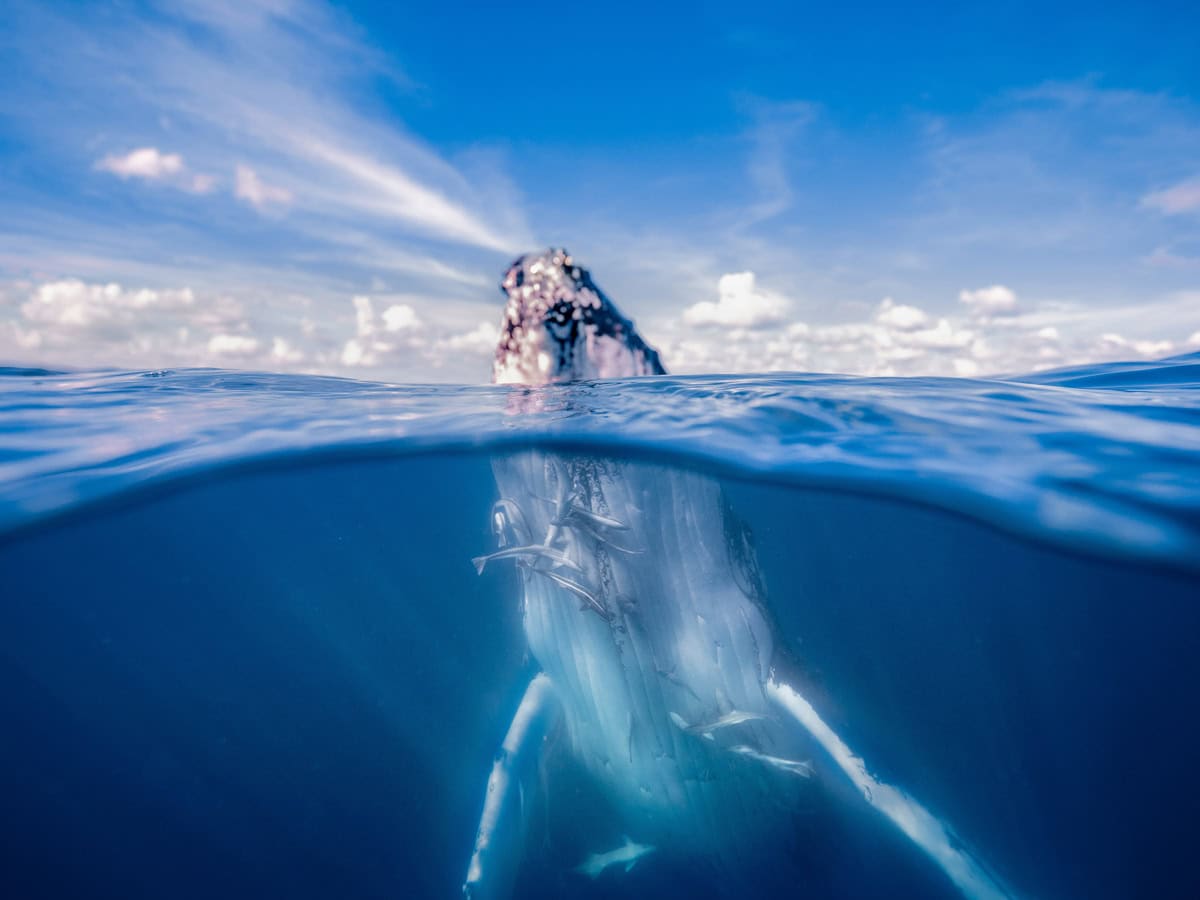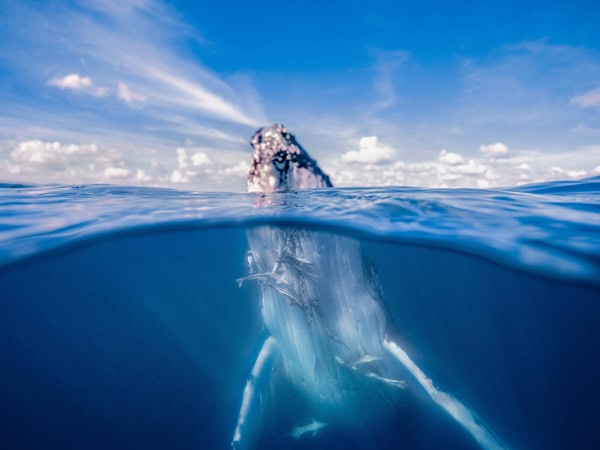31 May 2024
![]() 6 mins Read
6 mins Read

Humbling and fascinating, locals and tourists head out in droves to the headlands and on whale-watching tours during whale-watching season.
But where are the best places to go to make out the breaches and water spouts of thousands of migrating whales? Here are the top whale-watching locations in Australia.
Every winter, pods of humpback whales can be spotted off the east coast of Australia. They make their way up from Antarctica to the Great Barrier Reef to mate and give birth, before taking their calves out of the nursery and going back down south.

Join a whale-watching tour in Hervey Bay. (Image: Tourism and Events Queensland)
It is for this reason that the warm and sheltered waters of the Great Sandy Marine Park on the Fraser Coast and nearby K’gari make for the ideal rest area for migrating whales.

The Great Sandy Marine Park is the ideal rest area for migrating whales. (Image: Tourism and Events Queensland)
Hervey Bay was the world’s first Whale Heritage Site, named by the World Cetacean Alliance and is one of the most popular places in Australia to observe the mighty tail slaps of these peaceful creatures.

You might even get a chance to swim with humpback whales. (Image: Tourism and Events Queensland)
Whales are a regular fixture of the NSW South Coast during the colder months – in particular, close to the Sapphire Coast. From the waters of Bermagui to Eden, you will be able to see travelling humpback whales and southern right whales as they rest and feed in the waters.

Spot humpback whales while on the South Coast. (Image: Jordan Robins)
There is also a fascinating history of whale and human collaboration here. Up until the early 20th century, it was rumoured that orcas would even help whalers to catch baleen whales – that is, until whalers killed and maimed some of their pod.

Southern right whales and humpback whales travel in the waters of the South Coast. (Image: Jordan Robins)
From early in the year until April, family pods of orcas (also known as killer whales) begin turning up to Bremer Bay in the south of Western Australia. Why do they come here? It is still not 100 per cent certain. But whatever the reason, avid whale watchers can make their way out to watch them hunting in groups, stalking squid and other prey.

Orcas come to Bremer Bay from early in the year until April. (Image: Tourism Western Australia)
In autumn, you might also recognise sperm whales and pilot whales. In winter, keep an eye out for southern right whales, who arrive to raise their calves in the sheltered waters of Bremer Bay.

Get a chance to spot orcas up close. (Image: Tourism Western Australia)
Perched up on a lookout or steaming out to sea, from May to October it’s likely you’ll get a sighting of the southern right whale on South Australia’s Fleurieu Peninsula. Each year, they make their annual migration from Antarctica along the coast of southern Australia. This means that if you keep an eye out, you can catch a glimpse of them in beachside towns like Victor Harbor.

Catch the annual whale migration from Victor Harbor. (Image: South Australian Tourism Commission)
Chances are you will also experience other impressive marine wildlife sightings, like common and bottlenose dolphins, as well as New Zealand fur seals and Australian sea lions on a trip out – a bonus not to be sniffed at.

Get a sighting of the southern right whale. (Image: The Big Duck Boat Tours)
Today, Freycinet National Park on Tasmania’s east coast is known as one of the best places in the island state to see southern right whales. But this was not always the case. During the early 19th century, whales found here were mercilessly hunted for their oil-rich blubber and useful bones.

Get an up-close look at southern right whales in Freycinet National Park. (Image: Tourism Tasmania/bodhiimages)
In fact, the lovely Wineglass Bay was named because of the way its blue waters were transformed into a gory ‘red wine glass’ when the blood of whales would fill it. A beautiful name for a gruesome practice.

Go whale-watching at the picturesque Wineglass Bay. (Image: Melissa Findley)
The tropical waters of the reef in the Whitsundays are some of the best places to find whales and have also been named a Whale Heritage Site. So, keep an eye out for breaching and playing calves with their mothers here.
If you’re careful (and very, very lucky), you might even identify a female dwarf minke whale.

Have a chance to see a female dwarf minke whale. (Image: Tourism and Events Queensland)
The dry season from May to October is the best time to explore the red rock formations and dusty roads of the enormous Kimberley region.

Embark on a whale-watching tour off the coast of the Kimberley. (Image: Tourism Western Australia)
It’s also when humpback whales make their annual journey from Antarctica to this remote corner of Western Australia. Calves and adults alike are protected by islands and reefs, for the breeding season.

Migrating humpback whales appear on the Dampier Peninsula. (Image: Tourism Western Australia/@from.miles.away)
A 12 or so-hour drive in the opposite direction of Victor Harbor will take you to the high cliffs of the Head of Bight. Near the Nullarbor Plain on the Eyre Peninsula, the high vantage point offers another excellent location to see whales.

The Head of Bight is an excellent location to see whales. (Image: South Australian Tourism Commission)
Southern right whales give birth near here, meaning you will also make out calves playing with their mothers in the relatively safe waters. The best time to come to spot them here is in August.

Spot mothers and calves playing together. (Image: South Australian Tourism Commission)
LEAVE YOUR COMMENT